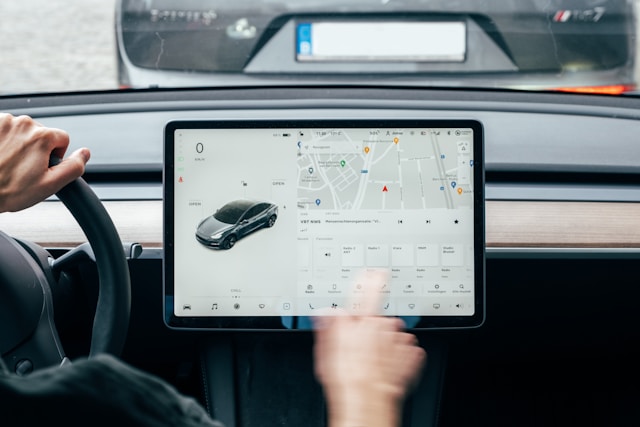現代の変化の激しい市場では、消費者の行動を理解することが非常に重要だ。これは単に顧客のニーズを満たすだけでなく、顧客の期待を超える製品を作るために欠かせない。
消費者の行動や心理を深く理解し、それをサービス設計に活かすことで、消費者の心に強く訴える製品を作ることができ、顧客満足度を高め長期的な顧客との関係を築くことができる。
ここでは、行動科学の知見をサービスデザインやマーケティング戦略に取り入れる方法について詳しく見ていく。
顧客中心のデザイン
消費者中心のデザインは、消費者の生活に自然に溶け込み、彼らのニーズに対応し、行動に合わせた製品を創造することに焦点を当てる。
このアプローチを実行するための方法:
1. メンタルモデルの理解
- 消費者が類似製品についてどのように考え、操作するのかを理解するためのユーザーリサーチを実施。
- カードソーティングやユーザージャーニーマッピングなどの手法を使い、消費者の思考プロセスを可視化。
2. 行動経済学の原則を活用
- 「ナッジ理論」を用いて、製品内でユーザーを望ましい行動に導く
- 「IKEA効果」を活用し、ユーザーが製品体験に参加することで価値を高める
3. 認知負荷を軽減するデザイン
- 直感的なインターフェースを実装して、認知負荷を軽減する。
- 使い慣れたパターンや慣習を取り入れて、ユーザビリティと採用率を向上。
テスラは、消費者中心のデザインアプローチにより、自動車業界に革命をもたらし、製品が消費者の生活にシームレスに統合されるように、彼らのニーズと行動に合わせた設計を行っている。
行動科学の応用:
1. メンタルモデル
- ユーザー調査: 消費者が電気自動車(EV)についてどのように考え、相互作用するかを理解するための広範なユーザー調査を実施する。これには、消費者の期待、航続距離不安に関する懸念、車内テクノロジーへの嗜好の分析が含まれる。
- 技法: ユーザージャーニーマッピングなどの技法を使用し、潜在的顧客がEVの所有と運転のプロセスをどのように経験するかを可視化する。これにより、問題点と改善の機会を特定できる。
メンタルモデル理論:
メンタルモデル理論は、人々が新しいものに接したとき、過去の経験や知識を基に、そのものがどう動くかをイメージすると考える。テスラはこの理論を活用し、ユーザーが直感的に使える製品を作り出している。
良い例が、テスラのスーパーチャージャーネットワークだ。多くの人は従来のガソリンスタンドに慣れている。テスラは電気自動車の充電所をこれに似た形で設計した。そうすることで、ユーザーは新しい技術でも違和感なく使えるようになる。結果として、電気自動車特有の「バッテリーが切れるのでは」という不安も軽減できた。
このように、ユーザーの既存の理解や習慣に合わせて新しい製品を設計することで、テスラはより使いやすく、親しみやすい製品を生み出すことに成功している。
2. ナッジ
ナッジ理論
環境に優しい行動へ利用者を導くよう車を設計することでナッジ理論を適用。
例えば、
🤖ダッシュボードに、現在の運転がどれだけエコかを示すスコアを表示。
🤖深夜電力を使用する時間帯に充電を促すメッセージを表示。これにより、電力需要のピークを避け、より効率的なエネルギー利用を促進。
IKEA効果
ユーザーを製品体験に参加させることで、IKEA効果を活用する。カスタマイズ可能な運転プロファイルやOTAソフトウェアアップデートなどの機能により、ユーザーは自分の車により投資していると感じることができる。
3. 使いやすさを重視した設計
シンプルで直感的な操作性を実現するデザイン
テスラの車内は、誰もが簡単に操作できるように工夫されている。その中心となるのが、ダッシュボードの真ん中に配置された大きなタッチスクリーンだ。
このスクリーンの特徴は:
1️⃣ すぐに分かる反応: 画面を操作すると、すぐに反応があり、何が起こったのかが一目で分かる。
2️⃣ 一か所で全てを操作: エアコン、ナビ、音楽など、車のほとんどの機能をこの1つの画面で操作できる。
馴染みのあるパターン
スマホのような使い心地: 画面の操作方法は、多くの人が日常的に使うスマートフォンとよく似ている。例えば、指でスワイプしたり、ピンチイン・アウトしたりする動作。
使いやすさを重視した設計は、認知負荷理論に沿っている。この理論は、精神的努力を軽減する、よりシンプルなインターフェースが、より良いユーザー体験につながると示唆している。テスラの効率的で直感的な設計は、運転者の認知負荷を最小限に抑え、使いやすさと採用を促進している。

ナイキは、ランナーのための「Nike+ Run Club」アプリを通じて、使う人の立場に立った製品作りを実現している。このアプリは、ランナーが自分の走りを記録し、目標を立て、やる気を保つのを手伝うように作られている。
1. メンタルモデル
具体的な機能例:
- 個人に合わせたトレーニング計画
- 走った距離や時間の記録
- 友達と記録を共有する機能
この方法は「目標設定理論」という考え方に基づいている。この理論では、具体的で少し難しい目標を立てると、より良い結果が得られるとされている。ナイキは、ユーザーが自分で目標を決めて記録できるようにすることで、ランナーが「進歩」や「達成」について普段から持っているイメージを活かせる。
このように、ナイキはランナーの気持ちや考えをよく理解し、それに合わせたアプリを作ることで、多くのランナーに愛用されるアプリを生み出すことに成功した。
2. ナッジ
ナイキは、人間の心理を上手く利用して、ランナーが継続的に走り、目標を達成できるよう工夫している。
- 習慣づけのための小さな仕掛け:
- 予定した日に走るよう、スマホに通知を送る
- 距離や回数などの目標を達成すると、バッジをもらえる
- その人に合わせた励ましのメッセージを送る
- 「失いたくない」気持ちを活用: ナイキは、人が「失うこと」を嫌う心理を利用している。例えば、「3日連続で走った」という記録を表示する。ユーザーは、この「連続記録」を途切れさせたくないと思い、走り続けるモチベーションになる。
- 「自分で作った」という愛着を大切に:
- ユーザーが自分で練習プランを調整できるようにする
- 自分で考えたランニングコースを他の人と共有できる機能を提供
このように、ナイキは人間の心理をよく理解し、それを活かしたアプリの機能を提供することで、ユーザーが自然とランニングを続けたくなるような仕組みを作り上げている。
3. 使いやすさを重視した設計
シンプルで直感的なデザイン
ナイキのアプリは、ユーザーが迷わず簡単に操作できるよう設計されている。
- アイコンを使った分かりやすいナビゲーション
- ワンタップでランニング記録を開始
- 走行データを見やすく表示
認知負荷理論
ℹ️ 認知負荷理論とは?
人間の脳には、一度に処理できる情報量に限界がある。この限界を超えると、学習効率が低下し、集中力が途切れてしまう。
ナイキのアプリが認知負荷理論に基づいている理由
ナイキのアプリは、この理論に基づき、ユーザーの認知負荷を最小限に抑える設計になっている。
複雑な計算や分析を必要としないため、ユーザーの認知負荷を軽減する。
シンプルなインターフェース:
余分な要素を削ぎ落とし、必要な情報だけに絞ることで、ユーザーが迷わずに操作できる。視覚的なノイズを減らし、集中力を妨げない。
直感的なアイコン:
アイコンは、言葉よりも直感的に情報を伝達できる。ユーザーは、アイコンを見ただけで、その機能を理解できる。
わかりやすいデータ表示:
走行距離やペースなどのデータを、グラフや数値で視覚的に表示することで、ユーザーは自分の進捗状況を簡単に把握できる。
馴染みのあるパターン
フィットネスアプリやSNSでおなじみの操作方法を採用
- スワイプ操作によるナビゲーション
- 友達の活動に「いいね」をつけるハートアイコン
- 目標達成度を示すプログレスバー
これは、「想起よりも認識」という原則に基づいている。 つまり、全く新しい操作方法を覚えるよりも、すでに知っている操作方法の方が、ユーザーにとって簡単だということ。 ナイキは、この原則を活用することで、より直感的で使いやすいアプリを実現している。
顧客の行動パターンを科学的に分析する行動洞察は、製品開発やマーケティング戦略に新たな可能性をもたらす。 これにより、企業は顧客の心の奥底にあるニーズを捉え、まさに「求めていたもの」を提供できるようになる。例えば、新製品のアイデア創出、顧客体験の最適化、そしてパーソナライズされたマーケティングの実施など、幅広い分野でその効果を発揮する。
